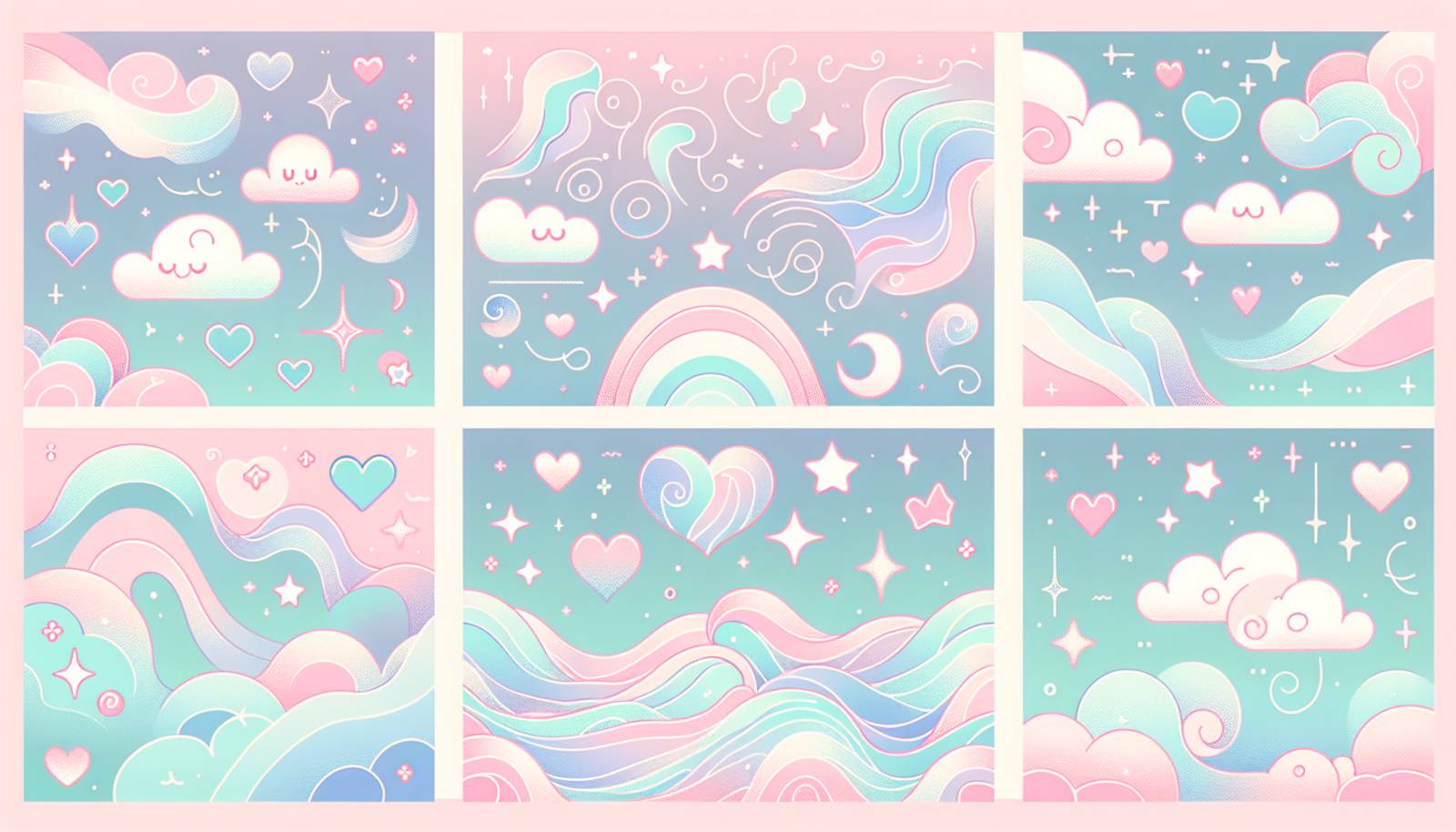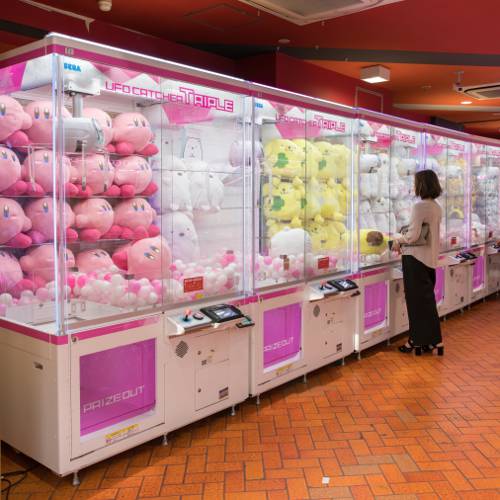
FAQ About The Role of Kawaii Culture in Japanese Pop Culture

What is kawaii culture?
Kawaii culture is a prominent aspect of Japanese pop culture that revolves around the concept of "cuteness." This cultural phenomenon emphasizes childlike innocence, charm, and playful aesthetics. It is characterized by bright colors, adorable characters, and a distinct style that is often reflected in fashion, media, and various products.

How did kawaii culture originate in Japan?
Kawaii culture originated in Japan during the 1970s. It began with the handwriting style of schoolgirls, who favored rounded and heart-shaped characters. Over time, this trend evolved and became embedded in various aspects of Japanese society, including fashion and consumer products. Companies like Sanrio capitalized on this trend by creating cute characters such as Hello Kitty, solidifying kawaii as a mainstream cultural phenomenon.

What role does kawaii culture play in Japanese fashion?
Kawaii culture plays a significant role in Japanese fashion, especially among younger generations. It has influenced an array of fashion styles such as Lolita, Decora, and Harajuku. These styles often feature vibrant colors, frills, bows, and other childlike elements that project a whimsical, cute aesthetic. Kawaii fashion is not just limited to clothing but also includes makeup and accessories that enhance the overall cute appearance.

How has kawaii culture influenced Japanese media?
Kawaii culture has deeply influenced Japanese media, including anime, manga, and video games. The portrayal of cute characters is a staple in these mediums, with exaggerated features like large eyes and expressive faces often used to evoke emotional responses. Shows like "Sailor Moon" and characters like Pikachu from "Pokémon" are prime examples of kawaii in Japanese media.

Is kawaii culture unique to Japan?
While kawaii culture is uniquely Japanese in its origins, its influence has spread worldwide. Elements of kawaii can be seen in global fashion, digital media, and entertainment. International brands have adopted kawaii aesthetics to appeal to a broader audience. However, the cultural context and significance of kawaii remain deeply rooted in Japanese society.

How does kawaii culture affect societal norms in Japan?
Kawaii culture affects societal norms in Japan by encouraging expressions of individuality and non-conformity in a generally conservative society. It allows people to embrace a softer, more childlike persona, often providing an emotional escape from the rigid expectations of adult life. This cultural trend has also contributed to shifts in gender norms, as men and women both engage with kawaii fashion and aesthetics.

What are some common misconceptions about kawaii culture?
One common misconception about kawaii culture is that it is solely about superficial cuteness and does not hold deeper meaning. In reality, kawaii can serve as a form of self-expression and rebellion against societal pressures. Another misconception is that it is only popular among young females, but kawaii appeals to a diverse audience, including males and older generations.

Why is kawaii culture so popular worldwide?
Kawaii culture's global popularity can be attributed to its universal appeal of innocence and positivity, which resonates with many people across different cultures. The imagery and aesthetics offer an escape from everyday life and bring a sense of joy and nostalgia. The spread of Japanese media, such as anime and manga, has also played a significant role in popularizing kawaii culture internationally.

How do Japanese companies capitalize on kawaii culture?
Japanese companies capitalize on kawaii culture by creating products that incorporate cute designs and characters, such as Hello Kitty, Rilakkuma, and Gudetama. These characters can be found on a wide range of items, including stationery, apparel, toys, and technology. By catering to the demand for kawaii products, companies can tap into various markets both domestically and internationally.

What impact does kawaii culture have on international product design?
Kawaii culture significantly impacts international product design by inspiring companies to incorporate playful and cute elements into their offerings. This approach helps attract customers who are drawn to charming, approachable aesthetics. Brands like Disney and pop culture icons like Marvel have occasionally adopted kawaii styles in their merchandising strategies to enhance their global appeal.

Can kawaii culture be considered a form of soft power for Japan?
Kawaii culture can indeed be considered a form of soft power for Japan. Soft power refers to the ability to influence and attract others through cultural or ideological means rather than force. By exporting kawaii culture through media, products, and international collaborations, Japan enhances its cultural presence globally, fostering positive perceptions and goodwill.

How does kawaii culture influence Japanese consumer behavior?
Kawaii culture influences Japanese consumer behavior by promoting a demand for products that are aesthetically pleasing and feature cute designs. People often gravitate towards purchases that reflect their personal style and emotional preferences, which are deeply connected to the ideals of cuteness and charm promoted by the kawaii trend. Brands that align with these aesthetics often experience strong sales in Japan.

What are some popular kawaii characters from Japan?
Some popular kawaii characters from Japan include Hello Kitty by Sanrio, Doraemon, Pikachu from Pokémon, Totoro from "My Neighbor Totoro," and various characters from Studio Ghibli films. These characters are adored for their cute appearances and have strong fan followings both in Japan and around the world.

How has kawaii culture influenced the arts in Japan?
Kawaii culture has influenced the arts in Japan by inspiring a range of creative expressions, including visual art, music, and design. Artists often incorporate kawaii elements into their work to evoke feelings of joy and nostalgia. This influence can be seen in the works of famous artists like Takashi Murakami, who blends traditional Japanese art concepts with modern kawaii aesthetics.

In what ways does kawaii culture intersect with Japanese technology?
Kawaii culture intersects with Japanese technology through the design of gadgets and apps that feature cute and user-friendly interfaces. Companies often incorporate kawaii elements into technology products, such as smartphones and robots, enhancing user engagement and satisfaction. Kawaii-inspired tech is popular in Japan and serves as a unique selling point in the global market as well.

How do tourists experience kawaii culture in Japan?
Tourists can experience kawaii culture in Japan by visiting vibrant districts like Harajuku in Tokyo, famous for its street fashion and kawaii shops. They can explore kawaii-themed cafes, attend pop culture events, and buy merchandise featuring beloved kawaii characters. Such experiences offer visitors insight into this charming facet of Japanese culture.

What are the criticisms of kawaii culture?
Criticisms of kawaii culture include claims that it promotes infantilization and a lack of seriousness, potentially oversimplifying complex social issues. Some critics argue that it encourages escapism rather than addressing real-world problems. However, supporters of kawaii culture view it as a positive and empowering form of expression and a way to foster creativity and individuality.

How has kawaii culture been adapted in Western countries?
In Western countries, kawaii culture has been adapted through fashion, design, and entertainment, embracing its playful and innocent elements. Western brands and designers incorporate kawaii styles in clothing lines, creating a fusion of Eastern and Western aesthetics. This adaptation often includes local interpretations of what is considered "cute," blending traditional cultural themes with the kawaii aesthetic.

What is the significance of character branding in kawaii culture?
Character branding plays a crucial role in kawaii culture by creating iconic figures that embody the essence of cuteness. These characters become symbols of commercial and cultural value, enhancing brand recognition and loyalty. The success of character branding in kawaii culture is evident in franchises such as Hello Kitty and Pokémon, which have become global phenomena.

How do educational institutions in Japan engage with kawaii culture?
Educational institutions in Japan engage with kawaii culture by incorporating it into learning materials and activities, making education more appealing and engaging for students. This approach includes creating kawaii mascots for schools and using cute designs in textbooks and educational tools, thereby fostering a positive learning environment and making education enjoyable for children.
